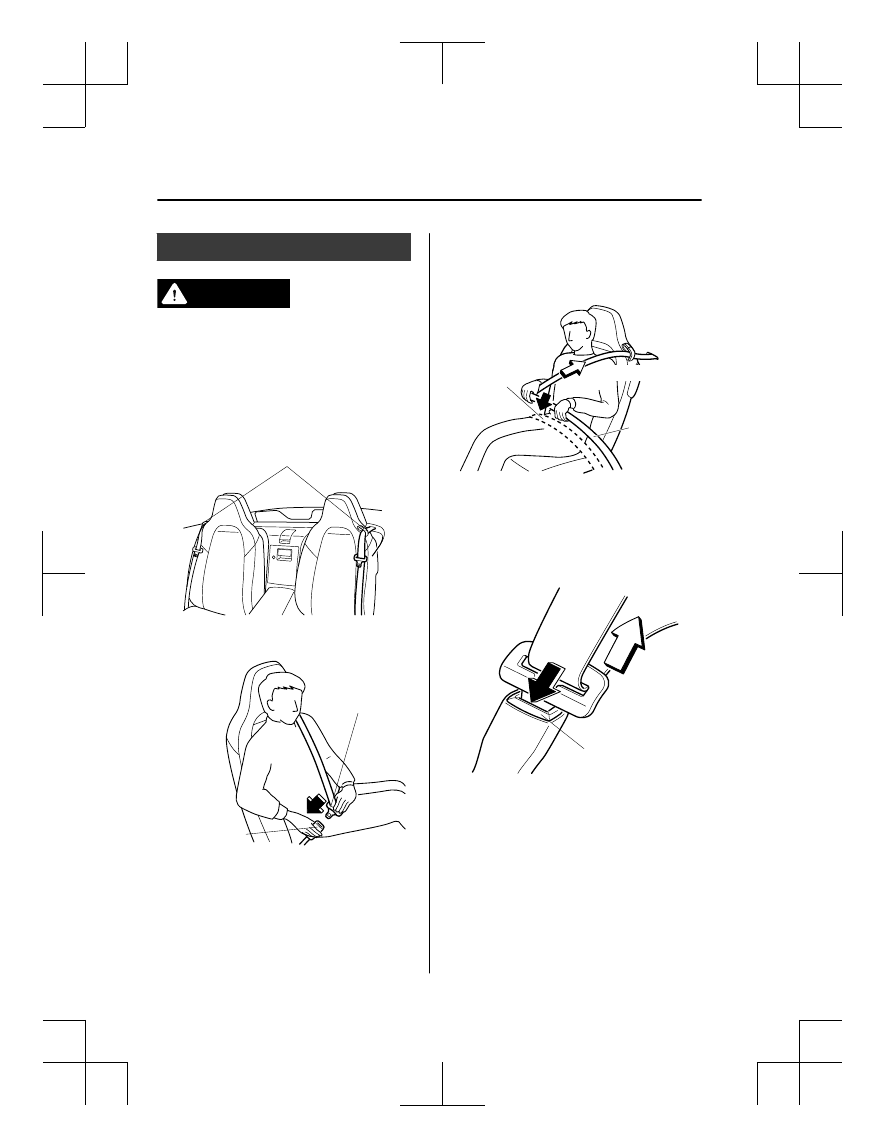Mazda MX-5 (2018 year). Manual - part 2

Seat Belt
WARNING
Always wear the seat belt with it correctly
routed in its guide:
Wearing a seat belt without the seat belt
routed in its guide is dangerous because
the seat belt would not be able to provide
adequate protection in an accident, which
could result in serious injury.
Seat belt guide
▼ Fastening the Seat Belt
Seat belt tongue
Seat belt buckle
Position the lap belt as low as possible, not
on the abdominal area, then adjust the
shoulder belt so that it fits snugly against
your body.
Keep low on
hip bone
Take up slack
Too high
▼ Unfastening the Seat Belt
Depress the button on the seat belt buckle.
If the belt does not fully retract, pull it out
and check for kinks or twists. Then make
sure it remains untwisted as it retracts.
Button
NOTE
If a belt does not fully retract, inspect it
for kinks and twists. If it is still not
retracting properly, have it inspected at an
Authorized Mazda Dealer.
Essential Safety Equipment
Seat Belt Systems
2-10
MX-5_8GF7-EA-17J_Edition2
2017-10-31 14:07:27